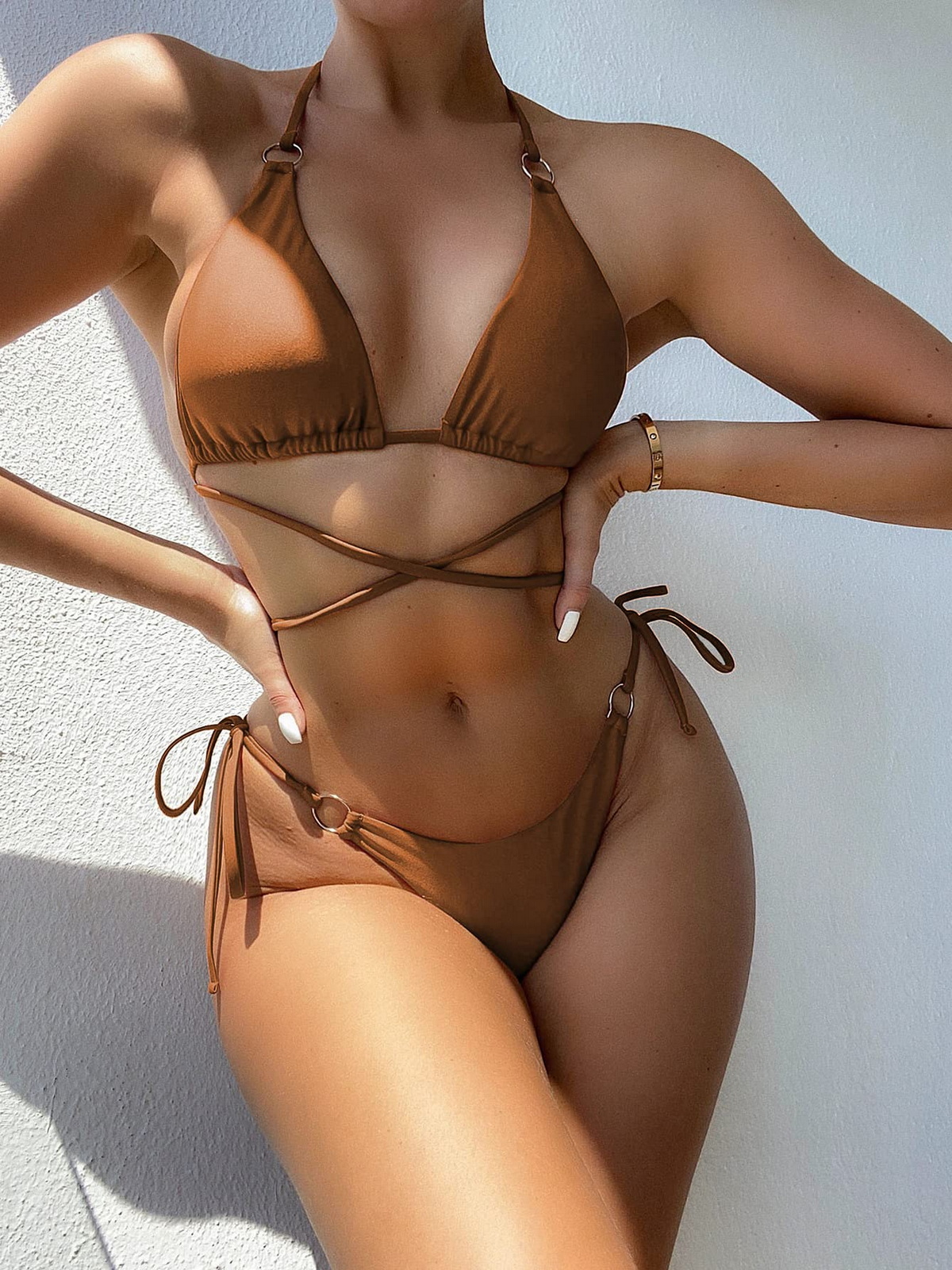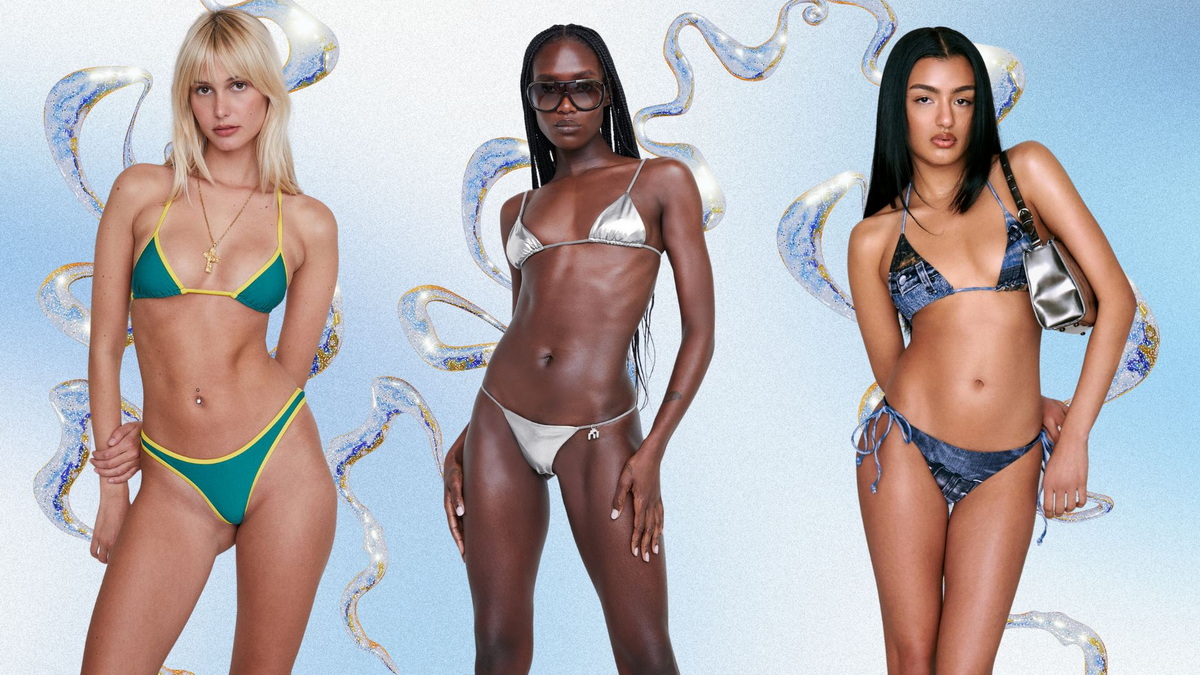Content Menu
● 1. Design and Style
● 2. Coverage
● 3. Comfort and Fit
● 4. Cultural Perceptions
● 5. Suitability for Activities
● 6. Fabric and Material
● 7. Fashion Trends
● 8. Personal Expression
● 9. Cost Considerations
● 10. Environmental Impact
● Conclusion
● Frequently Asked Questions
>> 1. Are micro bikinis suitable for all body types?
>> 2. Can I wear a micro bikini while swimming?
>> 3. Where can I find high-quality micro bikinis?
>> 4. What activities are best suited for traditional swimwear?
>> 5. How do I choose between a micro bikini and traditional swimwear?
Swimwear has evolved significantly over the years, with various styles catering to different preferences, body types, and occasions. Among these styles, micro bikinis have emerged as a bold choice, contrasting sharply with traditional swimwear options. This article delves into the key differences between micro bikinis and traditional swimwear, exploring aspects such as design, coverage, comfort, cultural perceptions, suitability for various activities, and more.

1. Design and Style
The most apparent difference between micro bikinis and traditional swimwear lies in their design.
- Micro Bikinis: These swimsuits are characterized by their minimalistic design, featuring very little fabric. They typically consist of small triangle tops and tiny bottoms that offer minimal coverage. The aim is to accentuate the body and provide a daring look. Micro bikinis come in various styles, including halter necks, bandeaus, and even asymmetrical cuts that add a unique flair.
- Traditional Swimwear: This category includes a wide range of styles such as one-piece swimsuits, tankinis, and classic bikinis. Traditional swimwear generally offers more coverage and support, making it suitable for a variety of body types. Many designs feature elements like ruching or tummy control panels that enhance comfort and confidence.
2. Coverage
Coverage is a significant factor that differentiates micro bikinis from traditional swimwear.
- Micro Bikinis: As the name suggests, micro bikinis provide minimal coverage. They often expose more skin than traditional options, making them ideal for sunbathing or pool parties where tanning is a priority. The minimal fabric allows for maximum tanning potential but can lead to tan lines if not carefully positioned.
- Traditional Swimwear: These swimsuits provide more coverage, which can include full coverage of the torso and rear. This makes them more appropriate for family outings or activities that require modesty. One-piece swimsuits can also feature stylish cutouts or back designs that maintain a modest appearance while still being fashionable.

3. Comfort and Fit
Comfort is subjective and varies based on personal preference; however, there are general trends in how micro bikinis and traditional swimwear fit.
- Micro Bikinis: Due to their minimal fabric, micro bikinis can feel freeing but may also lead to discomfort for some individuals. The lack of support can be an issue for those with larger busts or those who prefer more secure fits. Additionally, the thin straps may dig into the skin during movement.
- Traditional Swimwear: Typically designed with comfort in mind, traditional swimwear often incorporates features like underwire support, adjustable straps, and thicker materials that provide a snug fit without compromising comfort. Many brands also offer swimwear with built-in bras or additional padding for enhanced support.
4. Cultural Perceptions
Cultural attitudes towards swimwear can vary widely across different regions and communities.
- Micro Bikinis: In many Western cultures, micro bikinis are viewed as fashionable and empowering choices for confident individuals. However, they may be considered inappropriate or overly revealing in more conservative cultures. In some regions, wearing a micro bikini could attract unwanted attention or judgment.
- Traditional Swimwear: Generally accepted across various cultures, traditional swimwear tends to be seen as more modest and family-friendly. It aligns with societal norms regarding body exposure at public beaches or pools. As such, traditional options are often preferred in settings where cultural sensitivity is paramount.

5. Suitability for Activities
The intended use of swimwear plays a crucial role in determining which style to choose.
- Micro Bikinis: Best suited for sunbathing or lounging by the pool, micro bikinis may not be ideal for active water sports or swimming due to their limited coverage and support. They are often worn at beach parties or music festivals where fashion takes precedence over functionality.
- Traditional Swimwear: These swimsuits are versatile enough for various activities including swimming laps, playing beach volleyball, or engaging in water aerobics due to their supportive designs. Many traditional swimsuits also feature quick-drying materials that enhance their practicality for active use.
6. Fabric and Material
The type of fabric used can greatly influence the performance of swimwear.
- Micro Bikinis: Often made from lightweight materials such as nylon or spandex that allow for quick drying and minimal drag in the water. However, these fabrics may not always provide adequate support or durability over time. Some micro bikinis also incorporate unique textures like mesh or lace to enhance visual appeal while maintaining breathability.
- Traditional Swimwear: Typically constructed from thicker materials that offer better support and longevity. Many traditional swimsuits also incorporate UV protection features which are beneficial for prolonged sun exposure. Fabrics like polyester blends are common due to their resistance to chlorine and saltwater damage.

7. Fashion Trends
Fashion trends play a significant role in the popularity of different swimwear styles.
- Micro Bikinis: Often featured in fashion shows and magazines as high-fashion items, they appeal to those looking to make a statement or follow current trends in beach fashion. Influencers on social media platforms often showcase these daring styles, contributing to their popularity among younger demographics.
- Traditional Swimwear: While also subject to trends, traditional swimwear tends to emphasize functionality alongside style, appealing to a broader audience looking for practicality in their swim choices. Seasonal collections often introduce new prints and colors while maintaining classic silhouettes that cater to timeless tastes.
8. Personal Expression
Swimwear is often a form of personal expression reflecting individual style preferences.
- Micro Bikinis: For many wearers, choosing a micro bikini is about embracing body confidence and showcasing personal style through bold colors and unique cuts. The freedom associated with wearing less fabric allows individuals to express themselves without inhibition.
- Traditional Swimwear: Offers a wider range of options that cater to different tastes while allowing individuals to express their style without compromising on modesty or comfort. From floral prints to geometric patterns, traditional swimwear can reflect personality while still adhering to societal norms regarding modesty.

9. Cost Considerations
When choosing between micro bikinis and traditional swimwear, cost can also be an important factor.
- Micro Bikinis: Generally range in price depending on brand reputation and design complexity but can sometimes be found at lower price points due to their minimal fabric usage. However, high-end designer options can be quite expensive due to branding alone.
- Traditional Swimwear: Often comes with varying price ranges based on quality and brand recognition as well. While budget-friendly options exist, investing in higher-quality traditional swimsuits may offer better durability over time due to superior fabric construction.
10. Environmental Impact
As sustainability becomes increasingly important in fashion choices today:
- Micro Bikinis: The production process often involves synthetic materials which may not be eco-friendly unless sourced from sustainable brands focusing on environmentally conscious practices.
- Traditional Swimwear: Many brands now offer eco-friendly options made from recycled materials such as plastic bottles or fishing nets aimed at reducing ocean waste while providing stylish alternatives for consumers concerned about environmental impact.

Conclusion
In summary, the differences between micro bikinis and traditional swimwear are vast and multifaceted. From design aesthetics to cultural perceptions and suitability for activities, each style serves its purpose depending on individual preferences and contexts. Whether one opts for the daring allure of a micro bikini or the classic comfort of traditional swimwear ultimately comes down to personal choice.
Frequently Asked Questions
1. Are micro bikinis suitable for all body types?
- Micro bikinis can be worn by all body types; however, individuals should consider their comfort level with minimal coverage when choosing this style.
2. Can I wear a micro bikini while swimming?
- While you can wear a micro bikini while swimming, it may not provide the same level of support as traditional swimwear during vigorous activities.
3. Where can I find high-quality micro bikinis?
- Many online retailers specialize in trendy swimwear; look for brands that focus on quality materials and fit when shopping for micro bikinis.
4. What activities are best suited for traditional swimwear?
- Traditional swimwear is ideal for swimming laps, participating in water sports, or enjoying family outings at the beach where modesty is preferred.
5. How do I choose between a micro bikini and traditional swimwear?
- Consider factors such as your comfort level with exposure, intended activities while wearing the swimsuit, and your personal style preferences when making your choice.
This article now contains approximately 1,826 words (excluding FAQs).





































































